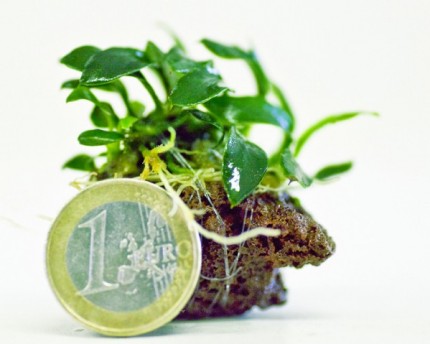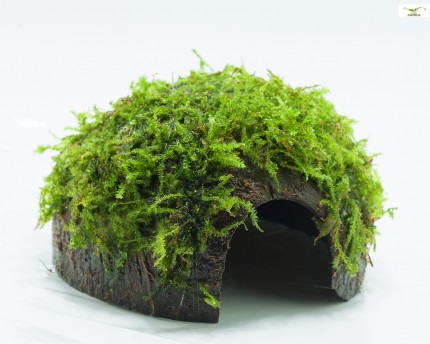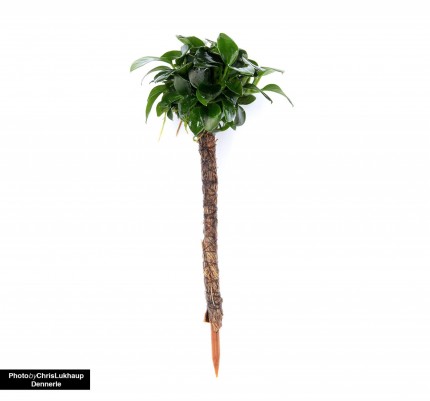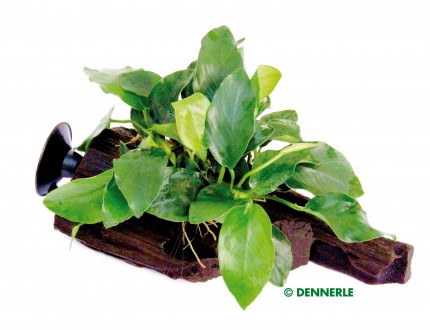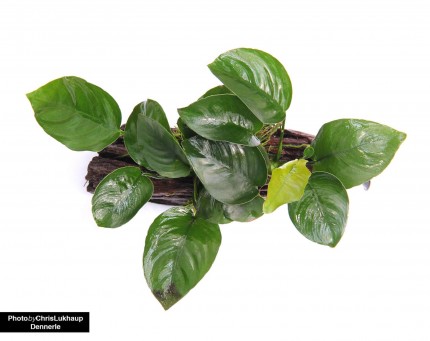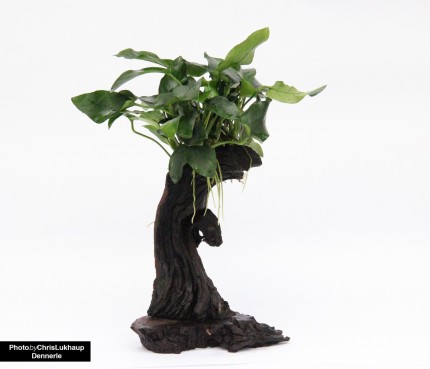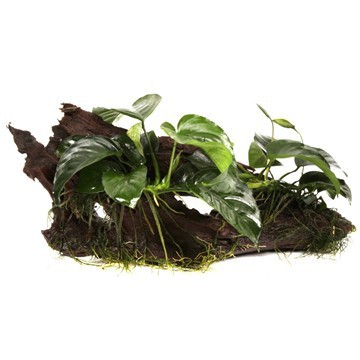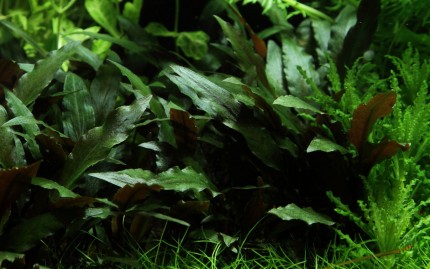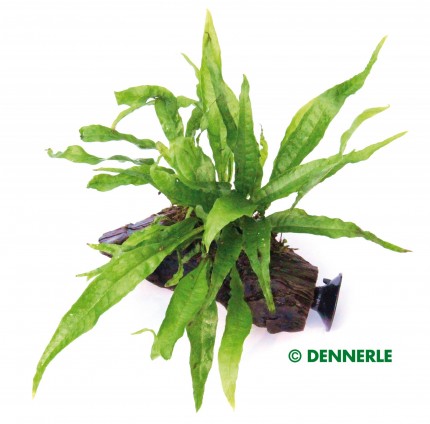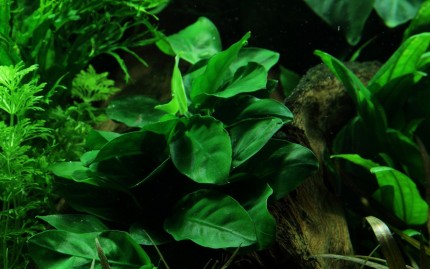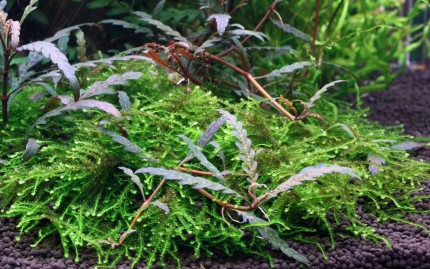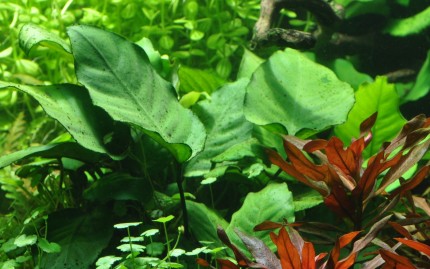The various cultivars of the Java fern Microsorum pteropus such as Trident, Windelov or Needle Leaf are wonderful plants for the middle ground, where they look great on hardscape such as roots, stones and other decoration. Caves for crayfish and shrimp such as the Coco Shell made from a coconut or Vukashelter also look much more attractive and above all much more natural and graceful when adorned by a lush green Javafarn or of course an Anubias.
Anubias barteri, the dwarf spear leaf, does not grow as large as other spear leaves from West Africa, and it comes in a variety of leaf colors. The Pinto Anubias is mottled white, and the Gold Anubias has a golden yellow hue. The Anubias barteri var. nana remains particularly small and is therefore also known as Bonsai Anubias.
The perching plant Anubias also does not like it when its rootstock is sunk into the substrate, then the plants can care or even die completely. Optimally, the spear leaves are therefore cultivated tied up, just as they grow in nature.
Here the work of tying up is already done, the Anubias and Javafarne here sit already fixed and ready tied up on lava stones, root pieces or caves like the Coco Shell from a coconut shell. Some of the root pieces are also equipped with a suction cup and can thus be easily attached to the aquarium pane, creating another level for shrimp and dwarf crabs and also for crabs, which the animals gladly accept as a welcome addition to their habitat.
Some of the roots are professionally planted with mosses in addition to being planted with Anubias and Microsorum, giving them a particularly natural look - these root pieces look like they have been freshly imported from the rainforest. Also the slate house with moss or various coconut caves, on which mosses were professionally bound, are real eye-catchers and make the necessary evil "caves" in an aquarium with crayfish or dwarf crayfish a virtue and a beautiful decoration.
A special chapter is formed by the beautifully planted Mbuna trees of the company Dennerle. Here especially large and impressive spear leaves are cultivated on selected root pieces, which look like a real jungle tree and are an ornament for every aquarium! The Mbuna trees are provided with a plate at the bottom, which, covered with some substrate, ensures that the jungle tree stands securely in the aquarium and cannot tip over.
There are also palm-like trees, they are planted with Anubias nana Bonsai and look almost deceptively similar to a real palm tree with the beautiful dark green plant tuft at the top. Ideal for creating landscapes in the aquarium!
Mosses, Anubias and Javafarn can also be cultivated in a permanently humid terrarium emers, so you can, for example, crabs from the genus Geosesarma with the Coco Shells or the slate house with moss also on land offer great, very natural-looking green hiding places and with the roots and stones the terrarium ideally green.
Furthermore, there are other planted decorations mainly for the foreground in the aquarium: with Hemianthus callitrichoides, Cuba Dwarf Pearlwort, planted stones offer this rather difficult to plant foreground plant a good start. The ground cover Kuba dwarf pearlwort has quite short roots and therefore has difficulty gaining a foothold in the substrate. Here it can continue to grow from the stone and thus naturally form a larger cushion.
The absolute trendy plant Bucephalandra also grows best tied up and comes here already ready tied up with an attractive piece of lava, which comes from the depths of the earth.
Another classic perching plant is the pinnate Hygrophila pinnatifida, but plants that are not quite so classically cultivated as perching plants, such as Pogostemon helferi and Cryptocoryne beckettii, also grow very easily if the planted stone in the foreground or middle ground is pressed lightly into the substrate so that the roots have contact with the substrate.
For the right all-round supply of your aquarium plants with all important nutrients, we recommend our NatureHolic plant fertilizers.

